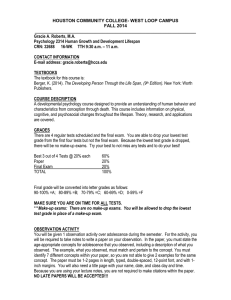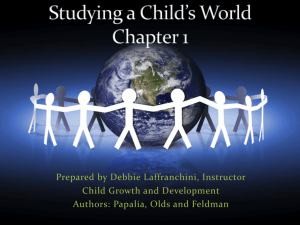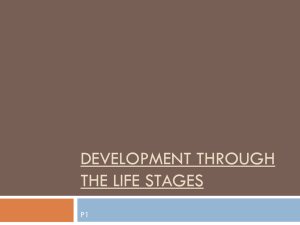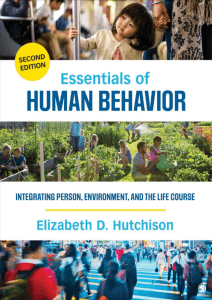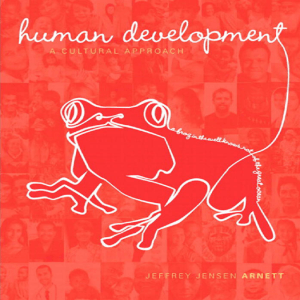Childhood Development
advertisement
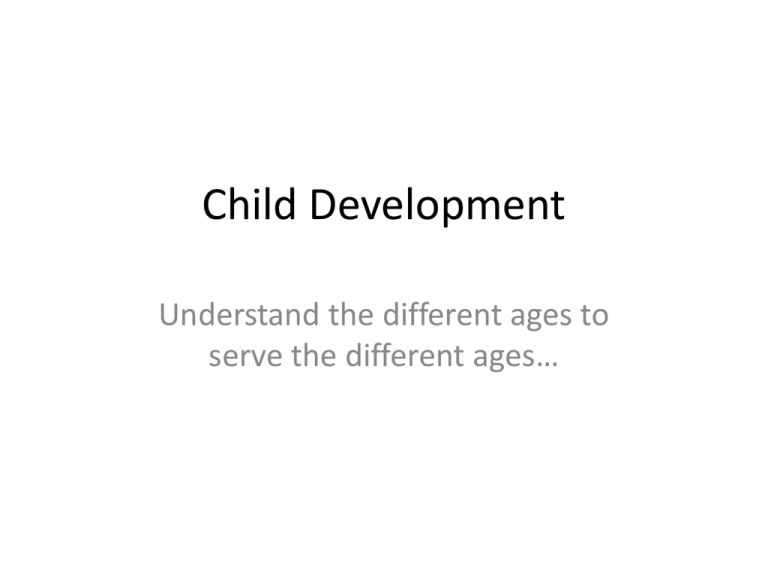
Child Development Understand the different ages to serve the different ages… Here’s the game plan • The facts about our kids’ development… – Infancy & Toddlerhood – Early Childhood – Middle Childhood – Adolescence – Emerging Adulthood • How we can we meet them where they are? – What do they need based on the issues for their age and development? Our Role as Servants Serve Pray Learn Kind of like… Eat Pray Love Although we do that stuff too Our Role as Servants • We have to meet our kids where they are • To do that, we need to know where they are Genesis 18:19 “For I have chosen him, so that he will direct his children and his household after him to keep the way of the LORD by doing what is right and just, so that the LORD will bring about for Abraham what he has promised him.” Childhood Development • Infancy & Toddlerhood – Birth to 2 • Early Childhood – 2 to 6 • Middle Childhood – 6 to 11 • Adolescence • Emerging Adulthood Infants and Toddlers – Birth to 2 • Children are adapting to the world & their environment – Assimilation – Accommodation – Organization • Memory – Infants are only capable of recognition – Middle of year one - recall • Attachment • Temperament – “Easy Child” – “Difficult Child” – “Slow-to-warm-up Children” • End of Toddlerhood – Self-Expression with the gain of language Early Childhood – 2 to 6 • Children begin sociodramatic play with their peers • Begin to understand that the dual representation of things • Children are very egocentric – They have difficulty understanding alternative perspectives – Children have “private” or self-guided speech for self-direction • Memory improves – children have episodic memory • Children become aware and curious about gender • Metacognition – Children begin “thinking-about-thinking” • Emotions – Children being to feel guilt – They develop a sense of self – Exhibit prosocial (empathy, altruism, etc) behavior Middle Childhood 6 to 11 • Information Processing – Children’s thought becomes more logical, flexible, & organized. – Children organize their world into categories – Attention-span increases & children become better at planning • Emotion – Children are capable of intentional self-regulation – Students need to feel a sense of industry or they begin to feel inferior – can lead to learned helplessness – Children begin making social comparisons – Children have internalized moral rules, ideas about – Gender roles become more flexible Adolescence • The effects of puberty: – Children distance themselves from their parents – Issues with body image based on when puberty is reached – Issues for Adolescents: • • • • Substance abuse Early Sex/Sexual experimentation Homosexuality Eating Disorders • Mental Abilities – Adolescents can coordinate theories with evidence – Mental abilities differ between males and females • Emotion – – – – – Identity is established and/or experimented with Self-esteem Ethnic and cultural identity Peer relations have an increased importance – as does conformity Teens seek autonomy Emerging Adulthood Late teens to Mid-twenties • Who? – Young people that have not yet taken on adult roles • Emerging adults prolong identity development as they explore alternatives in education, work, personal values, and love – Exploration is especially important Action Plan • As servants, we need to be there for one another. • As adolescents and emerging adults, your age group struggles with a lot. – Issues: • • • • • • • • • Substance abuse Early Sex/Sexual experimentation Homosexuality Eating Disorders Identity is established and/or experimented with Self-esteem Ethnic and cultural identity Peer relations have an increased importance – as does conformity Autonomy • Familiarize yourselves with these issues. Be aware of them. • Support one another. My Prayer “Dear LORD, Thank you for allowing us this time to prepare to serve your children. Help us to take the time to get to know each of them and what they need so that you may equip us with the tools to serve them. Give us the courage and the wisdom to support one another. In Your Holy Name, Amen.”

